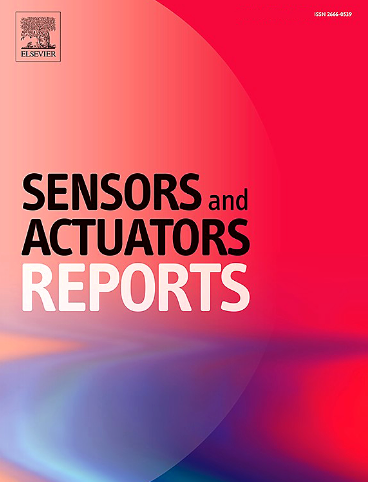Boundary engineering of porous zinc oxide nanosheets to enhance gas sensing performance
IF 7.6
Q1 BIOTECHNOLOGY & APPLIED MICROBIOLOGY
引用次数: 0
Abstract
Zinc oxide (ZnO) based gas sensors are noted for their high sensing response toward a wide range of gases, however, they often face challenges in achieving other required properties due to complex reaction dynamics under different operating conditions. Herein, we fabricated boundary-engineered porous ZnO nanosheets by controlling calcination temperature of hydrozincite. These materials were systematically evaluated their sensing performance towards oxidizing gases, reducing inorganic gases, and volatile organic compounds. Additionally, detailed sensing properties toward NO2, NH3, and acetone were examined to investigate the critical roles of the energy barrier for carrier transport (Eb) and the nature of ionized oxygen species in the sensing materials. Characteristics of the materials, such as crystallite size, pore size, porosity, and surface area, were effectively tuned, which significantly influenced Eb and sensing performance. The porous ZnO nanosheets calcined at 300 °C for 4 h, exhibiting a higher density of boundaries, demonstrated enhanced sensing performance with maximum response values of 10.59 for NO2, 0.38 for NH3, and 0.41 for acetone at personnel exposure level. This improvement is likely linked to the increased surface charge carrier concentration and the higher Eb associated with greater boundary density, indicating an increase in available reaction active sites. Furthermore, our findings reveal that gas sensing behavior is strongly dependent on the type of ionized oxygen species present. The optimal sensing temperature for NO2 is 250 °C, where the dominant ionized oxygen species is O−, while for NH3 and acetone, the optimal temperature was 450 °C, where O2− is the predominant species.

多孔氧化锌纳米片的边界工程增强气敏性能
氧化锌(ZnO)气体传感器以其对各种气体的高传感响应而闻名,然而,由于在不同操作条件下复杂的反应动力学,它们在实现其他所需性能方面经常面临挑战。本文通过控制氢锌矿的煅烧温度,制备了边界工程多孔ZnO纳米片。系统地评价了这些材料对氧化性气体、还原性无机气体和挥发性有机化合物的传感性能。此外,研究了传感材料对NO2、NH3和丙酮的传感性能,以研究载流子输运的能量势垒(Eb)的关键作用和电离氧的性质。材料的晶粒尺寸、孔径、孔隙率和比表面积等特性都得到了有效的调整,从而显著影响了Eb和传感性能。在300°C下煅烧4 h后,ZnO纳米片具有更高的边界密度,在人员暴露水平下对NO2的最大响应值为10.59,对NH3的最大响应值为0.38,对丙酮的最大响应值为0.41。这种改进可能与增加的表面载流子浓度和更高的Eb与更大的边界密度有关,表明可用的反应活性位点增加。此外,我们的研究结果表明,气体传感行为强烈依赖于存在的电离氧的类型。NO2的最佳感应温度为250℃,主要电离氧为O−;NH3和丙酮的最佳感应温度为450℃,主要电离氧为O2−。
本文章由计算机程序翻译,如有差异,请以英文原文为准。
求助全文
约1分钟内获得全文
求助全文
来源期刊

Sensors and Actuators Reports
Multiple-
CiteScore
9.60
自引率
0.00%
发文量
60
审稿时长
49 days
期刊介绍:
Sensors and Actuators Reports is a peer-reviewed open access journal launched out from the Sensors and Actuators journal family. Sensors and Actuators Reports is dedicated to publishing new and original works in the field of all type of sensors and actuators, including bio-, chemical-, physical-, and nano- sensors and actuators, which demonstrates significant progress beyond the current state of the art. The journal regularly publishes original research papers, reviews, and short communications.
For research papers and short communications, the journal aims to publish the new and original work supported by experimental results and as such purely theoretical works are not accepted.
 求助内容:
求助内容: 应助结果提醒方式:
应助结果提醒方式:


